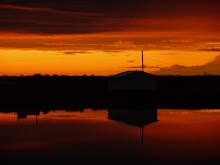Essential Question: How are landscapes formed and how, in turn, are cultures shaped by their landscapes?
Landscapes are formed, first, by the movement of the tectonic plates. The plates here move together and push one plate above another. This raises part of the landscape while at the same time pushing the other out of existence, no longer the surface of the earth. The friction of the plates causes earthquakes and volcanoes, each in their own way shaping the landscape. Water (in all of its forms: running water, waves, glaciers, ice) and wind also play a part on the shape the skin of our planet takes. The “Big Earthquake” in the 1960’s changed the shape of Alaska’s coastline in a matter of minutes. Here on the lower tundra trees are more bushes than real trees (despite what the kids call them!) because of the harsh winds and temperatures.
Landscape can determine a lot about a culture. Waterways make travel, trade and war easier. Mountains are obstacles that are not always passable. Landscape effects weather that in turn effects food supplies.
On one of the clips on TD that was assigned to us to watch a woman from the upper Yukon was talking about the concern about enough salmon getting to her area. They depend on this fish but because they are further in-land if the fish are all harvested on the lower river than her people would not have the fish they need for the year.
During my Alaska History class last summer I learned the tribes that lived near volcanoes in the lower southwest of Alaska mummified some of their dead. Mummies and Alaska are not usually thought of together in the same sentence. If not for the geological feature of the volcanoes, then the mummies would not have been possible.
This afternoon while at a neighbor’s house the subject of caribou hunting came up. It was asked if it was common to bleed and quarter the caribou before its brought back. Someone else said that it would be easy to bleed, just cut the throat, but then it was pointed out that the heart is no longer pumping and the blood won’t drain. This caught my attention. My family butchered our own meat when I was growing up and Dad always cut the throat to bleed and skin the animal. I realized that he had strong trees and other things to hoist the carcass up. Here there is not a tree strong enough to hold a small child much less a full-sized caribou or seal.
Subscribe to:
Post Comments (Atom)


Your story of caribou field dressing, trees and landscape is great. Personal, relevant, real.
ReplyDelete